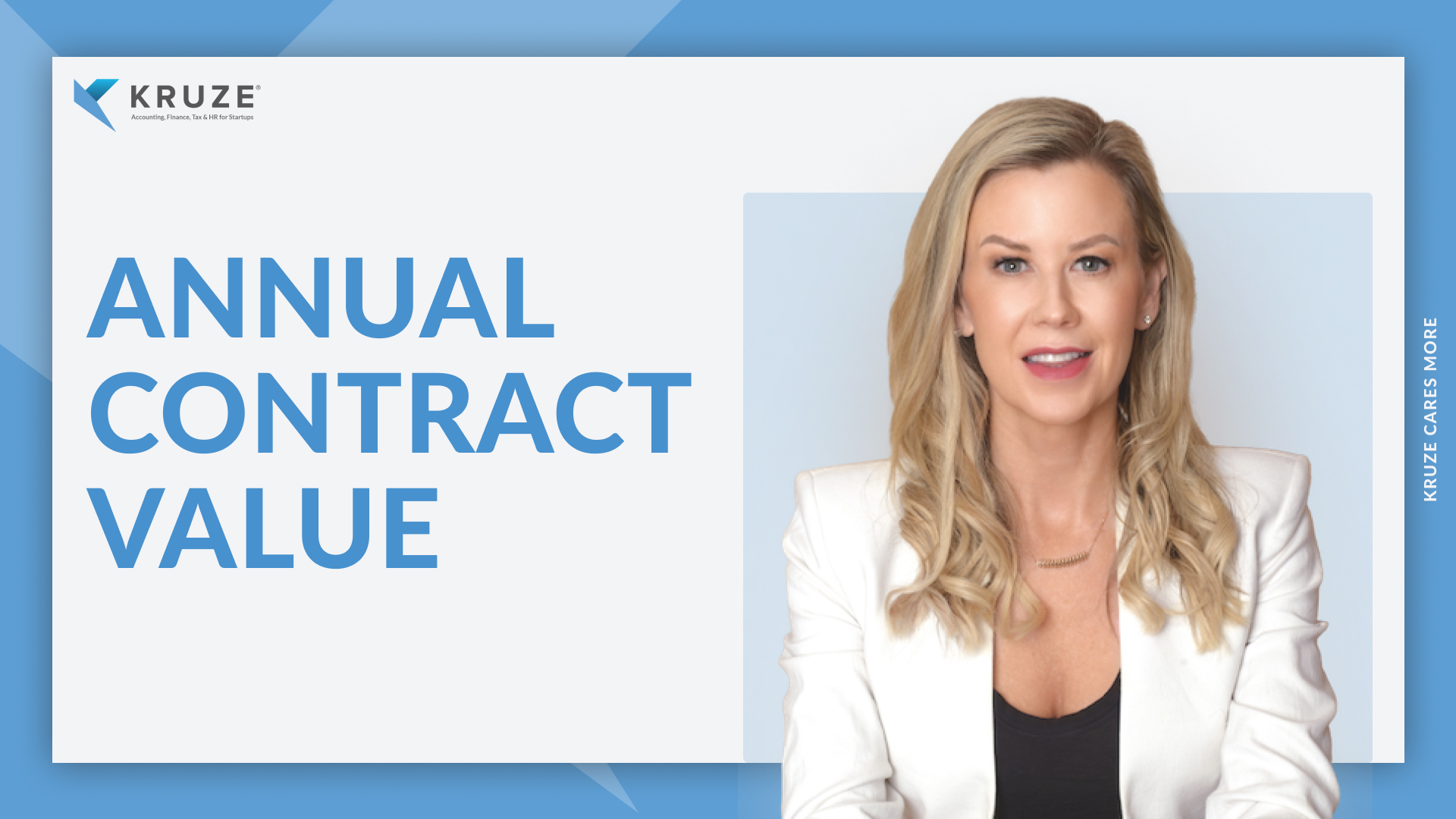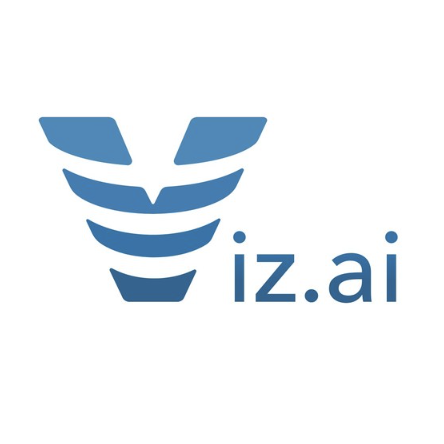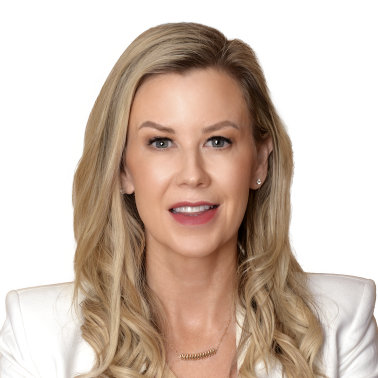
ACV, or Annual Contract Value, is a financial metric used by SaaS (Software as a Service) companies to measure the annual value of a customer contract.
It is calculated by taking the total contract value and dividing it by the number of years in the contract. For example, if a customer signs a three-year contract for $3,000 per year, the ACV would be $1,000.
This is not a GAAP or accounting defined metric. Instead, it’s a somewhat standardized way of looking at contracts that has been informally agreed upon by well-known SaaS investors and startup founders. Because it’s not officially defined, it makes sense to let investors know how you are calculating it, so that there are no surprises and so that no one feels misled. In particular, ACV generally does not include non-recurring revenue streams such as installation or one-off consulting revenue, even if these can be large components of the contract’s revenue. So make sure you define the metric when you present it to potential investors.
ACV is an important metric for SaaS companies because it helps them understand the average value of a customer contract and predict future revenue. It is also often used to measure the performance of sales teams and the overall health of the business - watching trends in ACV help a founder tell if their sales team or product are moving up market, closing smaller deals better, etc. Finally, larger ACVs usually unlock more expensive and elaborate sales and marketing activities.
The biggest advantage of higher ACVs
Businesses that sell subscription contracts with higher Annual Contract Values can afford to engage in more expensive sales and marketing efforts because they are generating more revenue per customer. With a higher ACV product, a company has more resources available to invest in marketing efforts that may be too costly for businesses with lower ACV products.
For example, a company with a high ACV product may be able to afford to hire a team of salespeople to actively seek out and close deals with potential customers. This type of sales effort can be expensive, as it requires a dedicated team of professionals, sales commissions, and potentially significant travel costs.
Another example of a marketing effort that may be possible with a high ACV product includes hosting industry events or sponsoring conferences, creating content marketing campaigns, or running social media advertising campaigns. All of these efforts require a significant investment of time and resources, and may only be possible for businesses with a high ACV product.
Customers that work with Kruze that have high ACVs often spend significant amounts of money on conferences; sometimes in the millions of dollars a year.
Overall, businesses that sell subscription contracts with higher ACVs can engage in more expensive sales and marketing efforts because they have the resources available to do so. This can help them reach a wider audience and generate more sales, ultimately leading to higher revenue and growth for the business.
How to calculate ACV for a SaaS business
To calculate Annual Contract Value, or ACV, you will need to know the total value of a customer contract and the length of the contract in years. Here is the formula for calculating this metric:
ACV = Total value of contract / Length of contract (in years)
For example, let’s say a customer signs a two-year contract for $3,000 per year. The total value of the contract would be $3,000 x 2 = $6,000. The ACV for this contract would be $6,000 / 2 = $3,000.
Here are a few more example calculations:
Example 1:
A customer signs a three-year contract for $4,000 per year.
Total value of contract: $4,000 x 3 = $12,000
ACV: $12,000 / 3 = $4,000
Example 2:
A customer signs a five-year contract for $1,500 per year.
Total value of contract: $1,500 x 5 = $7,500
ACV: $7,500 / 5 = $1,500
Example 3:
A customer signs a one-year contract for $2,000.
Total value of contract: $2,000
ACV: $2,000 / 1 = $2,000
ACV vs ARR
In accounting terms, Annual Recurring Revenue (ARR) and Annual Contract Value (ACV) are both financial metrics that are commonly used in the SaaS industry to evaluate a company’s financial performance. (Note that neither are actually defined accounting terms; they are terms that have become common language among SaaS accountants, VCs and founders, but are not actually defined by GAAP; so, as we’ve already mentioned, when talking to an investor about a particular metric, it’s important to define the metric so that everyone is using the same language.)
ACV is a metric that represents the average annual value of a customer contract. It is calculated by dividing the total value of a contract by the number of years in the contract. ACV is useful for measuring the long-term value of a customer and for identifying trends in customer spending. It helps you see how big customer contracts are, and can help you watch unit economics over time.
ARR is a metric that represents the annualized value of recurring revenue generated by subscription-based products or services. It is calculated by multiplying the Monthly Recurring Revenue (MRR) by 12 months. ARR is useful for measuring overall growth and forecasting future revenue. It can also be used to evaluate the stability and predictability of a company’s revenue stream.
Both metrics can be used in conjunction to gain a more comprehensive understanding of a company’s financial performance.
Different ACV Strategies for Startups
Annual contract value is the amount of money that your startup receives from a customer in a given year. Most startups, especially those in SaaS, will have their contracts or relationships contracted on a yearly basis. This is where ACV becomes really important, because it is a very useful, shorthand metric for reporting how much revenue your startup is generating in a given quarter.
How can founders use ACV?
A lot of startup founders will send out the quarterly email to their venture capitalists, and they might say “Hey, we closed one million dollars of ACV this quarter, which means over the next 12 months the clients that we sign are going to produce $1 million of revenue,” for example. The great thing about this, from a reporting perspective, is how venture capitalists can then immediately extrapolate the revenue run rate, in their head, by simply looking at this information.
For this particular example, VCs can look at the report and work out that, if the company doesn’t grow at all, they will be on a $4 million a year revenue run rate. They simply take the $1 million of ACV and multiply it by four quarters.
Of course, venture capitalists and startup founders always want to continue to grow the pie, and that extrapolation is actually quite a low estimate in this case. But that is just the quick math that the founder is communicating with their investors when they send that message out, making it a good starting point.
Generally speaking, you want your ACV to be as high as possible, but in order for your customers to be happy paying that much, you should be delivering a lot of value. If they really enjoy what they’re getting from you and you can charge for it, that’s a high ACV.
Low ACVs aren’t necessarily bad
There are some business models that intentionally go in with a low ACV. This is called the land and expand strategy.
The land and expand strategy works by purposely keeping the ACV on initial contracts low. This encourages people to try it and then, hopefully, keep using it. You don’t want a high ACV to act as a barrier for people trying something; instead you want to draw them in and expand from there.
Typically, this strategy is used in developer ops or developer tools, like GitHub. This approach works like this:
- GitHub pulls their customers in with a $10 subscription.
- One developer in a company starts using GitHub’s services.
- Before you know it, the entire company is paying tens of thousands of dollars in subscription fees as everyone has caught on to its value.
You know you have a great tool when it is being tried in an organization and it spreads throughout it. This indicates that, pretty soon, there will be a lot of usage, leading to a ton of adoption. From there, you will be able to move the ACV up over time and start to generate more revenue.
Of course, like having a high ACV, you still have to deliver value to your customers. If you don’t satisfy your customers then you risk your ACV hitting zero when they cancel.
Metrics other than ACV to track
There are several other metrics that SaaS startups should track in addition to ACV to understand sales performance and track financial performance. Visit our SaaS metrics article to see a longer list, but some of the most important include:
Monthly Recurring Revenue (MRR): MRR is an important metric for SaaS startups because it provides a clear picture of the company’s revenue growth over time
Annual Recurring Revenue (ARR): ARR is similar to MRR, but it is calculated on an annual basis rather than a monthly basis.
Customer Acquisition Cost (CAC): CAC is a measure of how much a company spends to acquire each new customer.
Lifetime Value (LTV): LTV is a measure of the total value that a customer is expected to generate over the course of their relationship with a company.
Customer Churn Rate: Customer churn rate is a measure of the percentage of customers who cancel their subscriptions or stop using a product or service over a given period of time. High churn rates not only indicate a problem with the product or pricing, they diminish the effective ACV and LTV a SaaS company will realize from their contracts.
By tracking these and other key metrics, SaaS startups can gain a better understanding of their sales performance and financial health, and make informed decisions about the future of their business.









